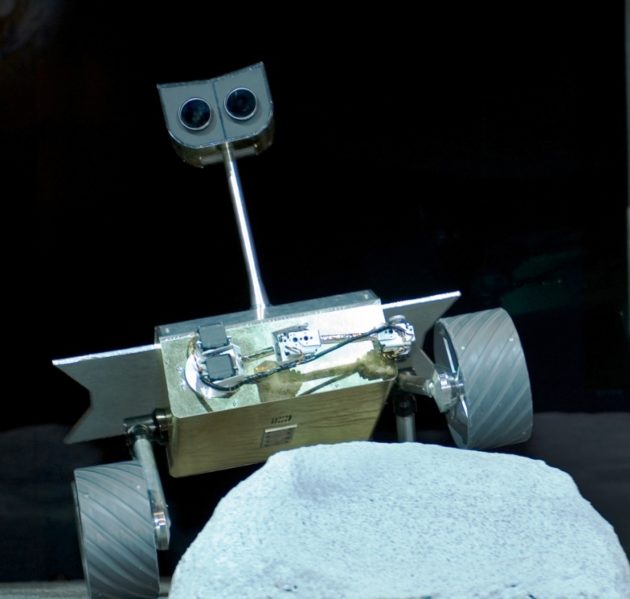
The Google Lunar XPRIZE finalists now have $4.75 million more to shoot for with the moon missions they’re planning, and more time to shoot for the moon as well.
The competition was set up a decade ago to encourage commercial moon exploration, with Google donating the prize money and the nonprofit XPRIZE organization handling the logistics.
A grand prize of $20 million was set aside to the first privately funded team to land a probe on the moon, get it to move at least 500 meters (yards) on the surface, and have it send back high-definition video and images. The second team to accomplish the feat could win $5 million.
As many as 25 teams vied for the prize over the years, but in January the field was whittled down to five: Hakuto, Moon Express, SpaceIL, Synergy Moon and TeamIndus.
The teams were facing a launch deadline of Dec, 31, 2017 – and although all five teams have been saying they could make that deadline, it was shaping up to be a close thing.
Today XPRIZE said the deadline has been reworked, giving teams until March 31, 2018, to complete their missions. The 2017 launch deadline no longer applies, XPRIZE spokesman Eric Desatnik told GeekWire via email.
The teams were already aware of the change in the deadline because it was written into their agreements with XPRIZE officials, but the shift wasn’t made public until today, Desatnik said.
XPRIZE and Google also announced that two new Milestone Prizes are being offered:
- The $1.75 million Lunar Arrival Milestone Prize would go to any teams that were able to have their spacecraft complete one orbit around the moon or enter a direct descent approach to the lunar surface – even if the descent ended with a crash.
- The $3 million Soft Landing Milestone Prize would go to teams whose spacecraft transmit data proving that it accomplished a soft landing on the moon – even if the probe couldn’t go any farther.
The two newly announced prizes are meant to reward teams that accomplish some but not all of the XPRIZE requirements by the March 31 deadline.
“XPRIZE and Google are thrilled to offer these additional in-space Milestone Prizes as a further incentive for finalist teams, and to recognize the full gravity of these bold technological feats taking place in the race to the moon,” Chanda Gonzales-Mowrer, senior director of the Google Lunar XPRIZE, said in today’s announcement.
The Milestone Prize money would be split evenly among all the teams that hit the specified goals. If a team goes on to take the grand prize or the second-place prize, those payouts would be reduced by the amount that the team won in Milestone Prizes.
This isn’t the first time Milestone Prizes have been employed in the Google Lunar XPRIZE competition: Back in 2015, five teams won a combined amount of $5.25 million in recognition of advancements in the areas of mobility, imaging and landing technology.
The Google Lunar XPRIZE follows in the footsteps of the $10 million Ansari XPRIZE for private-sector spaceflight, which the SpaceShipOne team won in 2004. Since then, XPRIZE has managed a wide range of incentive prize programs to boost technologies ranging from super-efficient automobiles to Star Trek-style medical tricorders.
Some of the Lunar XPRIZE competitors – including a couple that had to drop out of the race – say they intend to pursue commercial moon missions even if they don’t win the top award.



